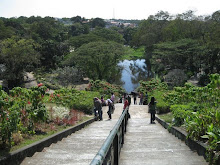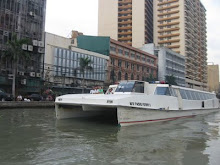
Martial Law Memorial Wall - Manila, Philippines
On September 21, 1972, President Ferdinand Marcos declared martial lawall over the Philippines by virtue of Proclamation 1081. His basis for issuing the order: rising lawlessness and violence by leftist elements made it necessary so he can "save the Republic" and build a new society. By abolishing Congress and assuming legislative powers, Presiden Marcos was able to rule by decree, in the next 14 years, in a government that he described as a form of "constitutional authoritarianism."
Under martial law President Marcos curtailed press freedom, limited civil liberties and ordered arrest of militants and his political oponents. Those who were suspected of subversion were arrested and detained; many were tortured; thousands were picked up in the dead of the night and never heard from again, becoming "deseparacidos" (the disappeared)
President Marcos lifted martial law on January 17, 1981, shortly before a visit by Pope John Paul II. However, he still retained most of his powers as dictator until February 25, 1986, when he was deposed in a bloodless civilian-military uprising known as People Power Revolution.
This marker is erected to remind the nation always of the searing memory of one act, one document, that transformed it in a crucible of fire and pain. This marker is especially dedicated to young martyrs, among them hundred of Manileños. who resisted martial law.
It honors as well those who lived to see its end, after fighting it. It is erected in the hope of inspiring people. especially the youth, to lead worthy lives, pursuing always the public good over self-interest, emboldened in their quest by the example of those who championed truth, liberty, and justice in one of the Republic's darkest hours.

































